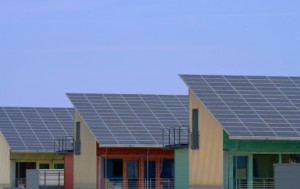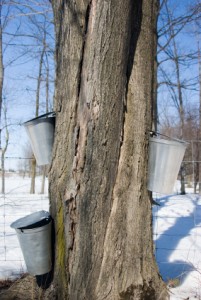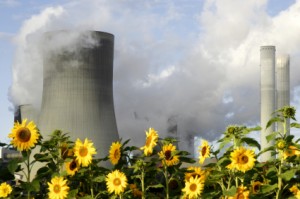Biofuel startups have a messaging problem. Everyone from scientists and environmentalists to economists and ethicists are hammering the industry in a near-daily barrage of bad press and damning research studies.
 I won’t spill the entire rap sheet against biofuels – you can read about them here or here for starters – but to summarize the key points affecting public perception:
I won’t spill the entire rap sheet against biofuels – you can read about them here or here for starters – but to summarize the key points affecting public perception:
- “sustainable biofuel” is an oxymoron: it takes far more fuel and energy to produce than it delivers
- production actually causes more greenhouse gas emissions than it eliminates
- it takes farmland away from food crops, increasing prices and world hunger, and
- it contributes to rainforest deforestation, to name just a few offenses.
These problems are primarily the domain of first-generation biofuels produced from food stock like corn, soybeans or palm oil. Whether its indictments are fair or not, the perception taints the entire industry, including more promising second-generation alternatives such as cellulosic ethanol (which relies on non-food biomass like agricultural waste products and wood chips) and algae-based biofuels.
Yet the industry’s only response is the same old message it’s been touting since day one: Biofuel helps reduce our dependence on foreign oil.
Important as energy independence may be, the message is ineffective. It’s a macroeconomic abstraction at a time when people are struggling with tougher problems closer to home… like having a job, healthcare and a place to live. It doesn’t give me a good reason to care. Besides, don’t solar, wind and other more clean energy industries have a more attractive hold on that same message? And for transportation fuels, electric and hybrid plug-in vehicles rule the day.
Weak messaging combined with the steady drumbeat of detractors has caused the biofuel industry to lose control of the debate…at their own peril. I don’t have the answer to biofuel’s messaging problem. But if asked, I’d steer the discussion this way:
Doing nothing is not an option – First, re-assert biofuel’s essential role in renewable energy diversity. The messaging needs to convey that while it may not be a perfect fuel; it’s certainly a better fuel. Detractors may fling their arrows, but what’s the alternative? Our oil addition may ebb as new green technologies catch hold, but it won’t go away in our generation. Do we just keep pumping and mainlining dirtier fossil fuels into our cars, homes and industries indefinitely? The messaging needs to communicate that doing nothing is not an option. No single renewable energy option can solve all our problems. Biofuel is a necessary part of our clean energy stew.
Make it personal, keep it local – The biofuel industry needs to get beyond its national energy independence message and explain how a well structured biofuel ecosystem can benefit local economies and, ultimately, people’s lives by:
- creating jobs in feed stock, production and distribution, and
- reducing the negative impact on local environments.
In our state of New Hampshire, for instance, the North Country’s economy is reeling from the collapse of the pulp and paper industry. Biomass production from waste wood would not only bring jobs and spur new ancillary businesses, it would lead to better forest management, which boosts tourism. Companies like Pacific Biodiesel and organizations like the Sustainable Biodiesel Alliance promote small scale, community-based biofuel production based on local feedstocks, local production and local distribution of sustainable fuel. In other words, “grow it here, produce it here, use it here.” The messaging needs to communicate how biofuel can positively impact me and everyone else at a personal level.
Rebrand – Lastly, biofuel startups need to directly address the early missteps and knocks against the industry openly and honestly. Acknowledge the problems and show what you’re doing to fix them. Continued support for current first-generation corn-based ethanol production is a non-starter. It’s an unsustainable industry propped up by bad public policy and pols beholding to the agri-biz lobby and Iowa caucus goers. It’s a battle that can’t be won in the long term.
This requires re-branding. Second-generation biofuel companies need to set themselves apart from their first-generation legacy with branding that communicates how they are different…how they are better. The branding should communicate the industry’s future vision. Today, biofuel startups attempt to differentiate based on their intellectual property and production methods. But who really cares which bacteria or enzymes are best for digesting cellulosic biomass, or which algae strains yield the most oil? Most of us don’t. We have faith you’ll figure out the science. Just show us the way forward.
The growing attacks on biofuel could have the negative effect of stymieing national and global biofuel policies at a time when breakthroughs in sustainable biofuel production are nearing commercial reality. The biofuel industry needs to reclaim the megaphone and deliver a clear, crisp message that communicates its benefits in a personal way.
 But critics have long argued that the LEED system is broken and doesn’t really live up to its eco-friendly mantle. They cite meager energy saving improvements and an easy-to-game point system that rewards individual features rather than a building’s total sustainability as just a few of its flaws. More significantly, LEED accreditation is awarded based on hypothetical estimates of energy modeling that was done at the design phase rather than the building’s actual energy performance when it’s in use.
But critics have long argued that the LEED system is broken and doesn’t really live up to its eco-friendly mantle. They cite meager energy saving improvements and an easy-to-game point system that rewards individual features rather than a building’s total sustainability as just a few of its flaws. More significantly, LEED accreditation is awarded based on hypothetical estimates of energy modeling that was done at the design phase rather than the building’s actual energy performance when it’s in use. Justin Moresco at GigaOM’s Earth2Tech blog added that the new rule could also boost demand for products from companies that develop energy-related technologies for buildings. And I see great potential for integrating Smart Grid capabilities into the LEED process. That’s because one way to meet the new requirement is to let the USGBC monitor a building’s performance directly using the local utility as its information gateway. Smart meters, sensors and Smart Energy management systems will be essential to making this happen.
Justin Moresco at GigaOM’s Earth2Tech blog added that the new rule could also boost demand for products from companies that develop energy-related technologies for buildings. And I see great potential for integrating Smart Grid capabilities into the LEED process. That’s because one way to meet the new requirement is to let the USGBC monitor a building’s performance directly using the local utility as its information gateway. Smart meters, sensors and Smart Energy management systems will be essential to making this happen.





